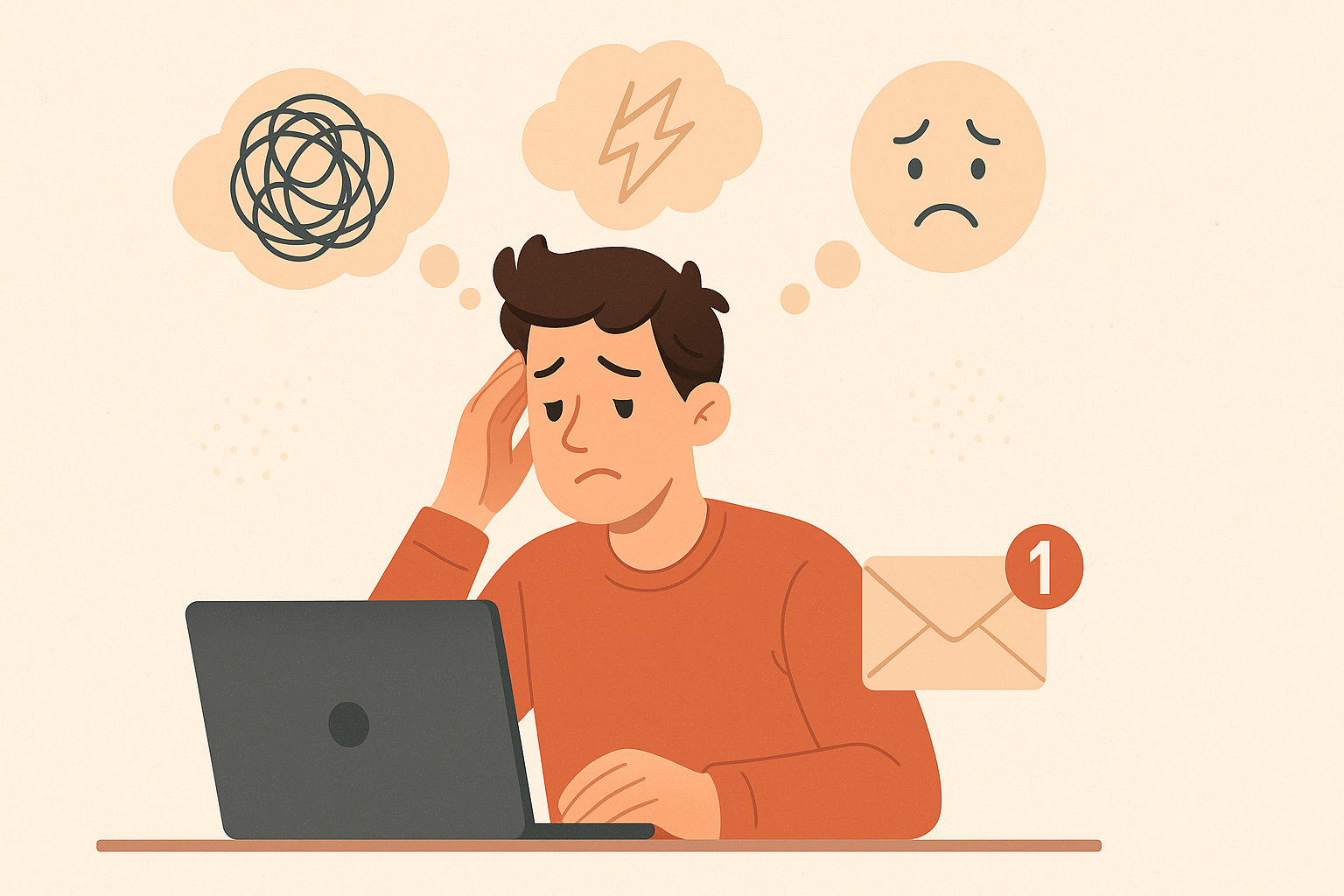Why Do We Procrastinate on Emails? Understanding the Root Causes
Uncover the hidden psychological factors that lead to email avoidance and how understanding them is the first step to breaking free.

Feeling stuck in front of your inbox even when you know the reply will only take a minute? You’re not alone. The psychology of email procrastination runs deeper than distraction. It often stems from fear, decision fatigue, and emotional resistance that professionals quietly battle every day, regardless of how efficient they appear on the surface.
This article explores the emotional and cognitive reasons behind the delay and how reframing your mindset can shift the pattern. For those ready to take action, we’ve also outlined 7 practical ways to break the cycle of email procrastination in our full guide.
The Emotional Drivers Behind Avoiding Emails
Fear of Imperfection or Judgment
Have you ever hesitated to hit send because you worried the tone might be off, or the wording might not sound professional enough? That’s perfectionism at work. The fear of judgment or sending something “not good enough” can turn even a two-sentence reply into an exhausting task.
Overwhelm from Inbox Clutter
When your inbox is flooded with hundreds of unread messages, the weight of starting becomes overwhelming. One reply often leads to more messages, complex threads, and unexpected demands. This perceived chaos tricks your brain into believing it's better to avoid it altogether.
Decision Fatigue
Throughout the day, your brain makes thousands of small decisions. By the time you open your inbox in the evening, even deciding how to phrase a greeting or structure a reply can feel like too much. Clicking “I’ll reply later” is a form of relief, but one that quickly compounds.
How the Psychology of Email Procrastination Plays Out
Negative Framing of Email Time
If you associate your inbox with stress or chores, you’ll naturally avoid it. Viewing email as a burden rather than a tool for connection turns a practical task into a mental block.
Context Switching Wears You Down
Moving between email, Slack, task lists, and other platforms fragments your attention. Each shift forces your brain to reorient, draining your ability to focus and making email replies feel harder than they are.
The Avoidance-Guilt Loop
Every unsent message becomes a lingering to-do. You tell yourself you’ll reply later, but later turns into guilt. That guilt becomes anxiety. And the next time you open your inbox, the emotional pressure is even higher.
What’s Really Going on in the Brain?
When facing an emotionally loaded email, your brain interprets it as a threat. It triggers your stress response, not in the life-or-death sense, but in a subtle, draining way. Instead of diving in, your mind nudges you toward easier, less emotionally risky tasks. This cycle feeds avoidance and chips away at daily momentum.
Emotional Blocks in Action
Naming these emotions is the first step to interrupting the autopilot response.
How to Reframe Your Relationship with Email
1. Treat Quick Replies as Micro-Tasks
If a response takes less than two minutes, handle it immediately. Framing small replies as achievable micro-tasks reduces emotional weight and helps build momentum.
2. Mentally Draft First
When facing a heavier email, give yourself permission to jot down rough ideas or bullets first. You don’t need to be perfect from the start. Reducing the pressure to be polished makes it easier to engage.
3. Set Inbox Time Limits
Dedicate short, focused time blocks to email—like 15-minute windows during your day. This removes the pressure to monitor constantly and turns email into a controlled, intentional space.
From Awareness to Action
Understanding the psychology behind your delay can turn reactive habits into proactive strategies. Instead of relying solely on tools, start with intention. Ask yourself: Am I avoiding it because I’m disorganized, or because I’m emotionally blocked?
Once you identify your patterns, supportive tools can help, such as email platforms that offer snooze options, scheduled send, or nudges for forgotten drafts. But tools are only effective when paired with mindset shifts.
To dive deeper into how to break the email avoidance cycle, see our complete guide: Is Email Procrastination Sabotaging Your Success? 7 Ways to Break the Cycle.
FAQs: Psychology of Email Procrastination
Why do I put off sending simple emails?
You may be facing perfectionism, social anxiety, or cognitive fatigue. Even small tasks feel big when they’re emotionally loaded.
Is procrastinating on emails a sign of burnout?
Yes. When you’re burnt out, even short replies can feel like a heavy mental lift. Your brain avoids effort in order to conserve energy.
Will organizing my inbox fix procrastination?
It helps reduce clutter, but the root issue is often emotional. Understanding your triggers is more effective than just cleaning up folders.
How can I make email feel less overwhelming?
Break replies into small drafts. Use bullet points first, then refine. Also, give yourself specific time blocks for email so it doesn’t spill into your day.
Are there tools that help reduce email avoidance?
Yes. Try apps that offer features like snooze, task integration, or draft nudges. But remember, tools help most when combined with self-awareness.


